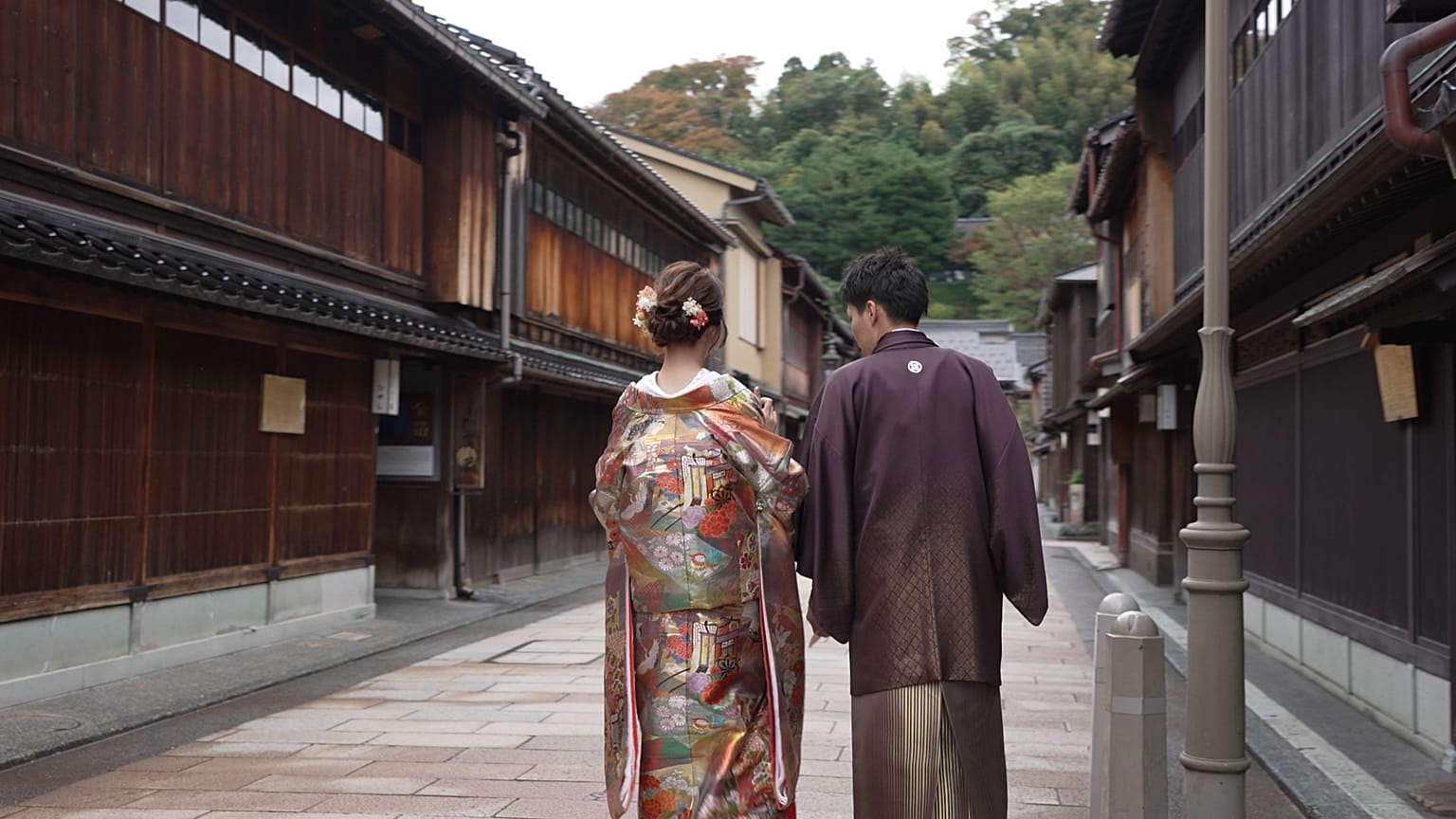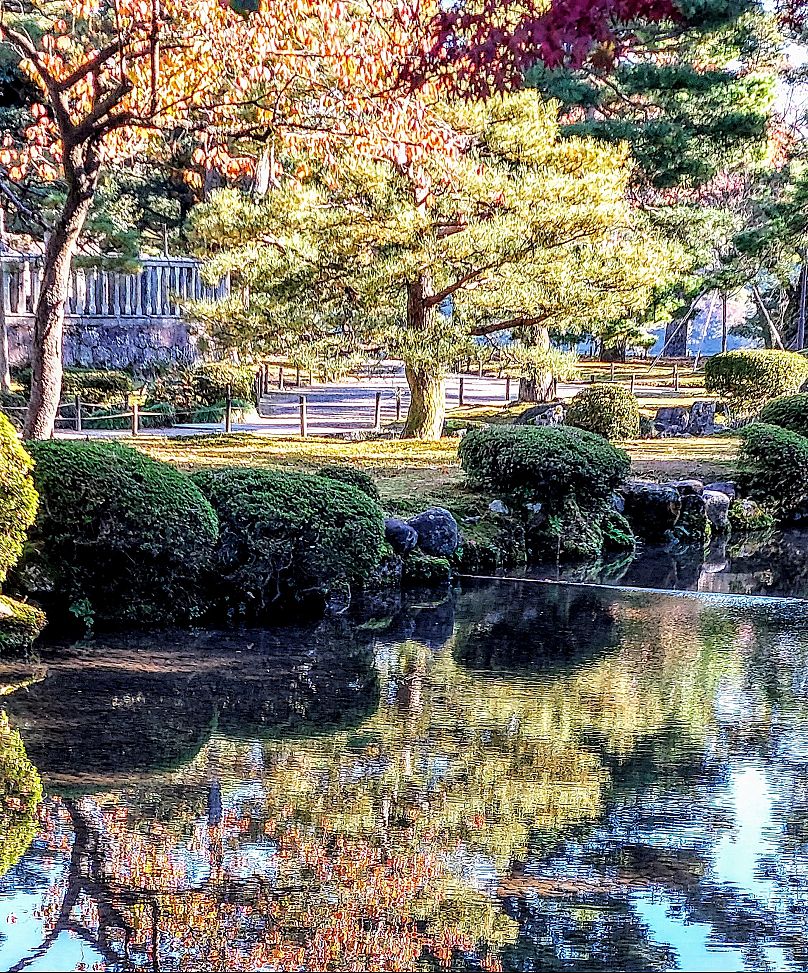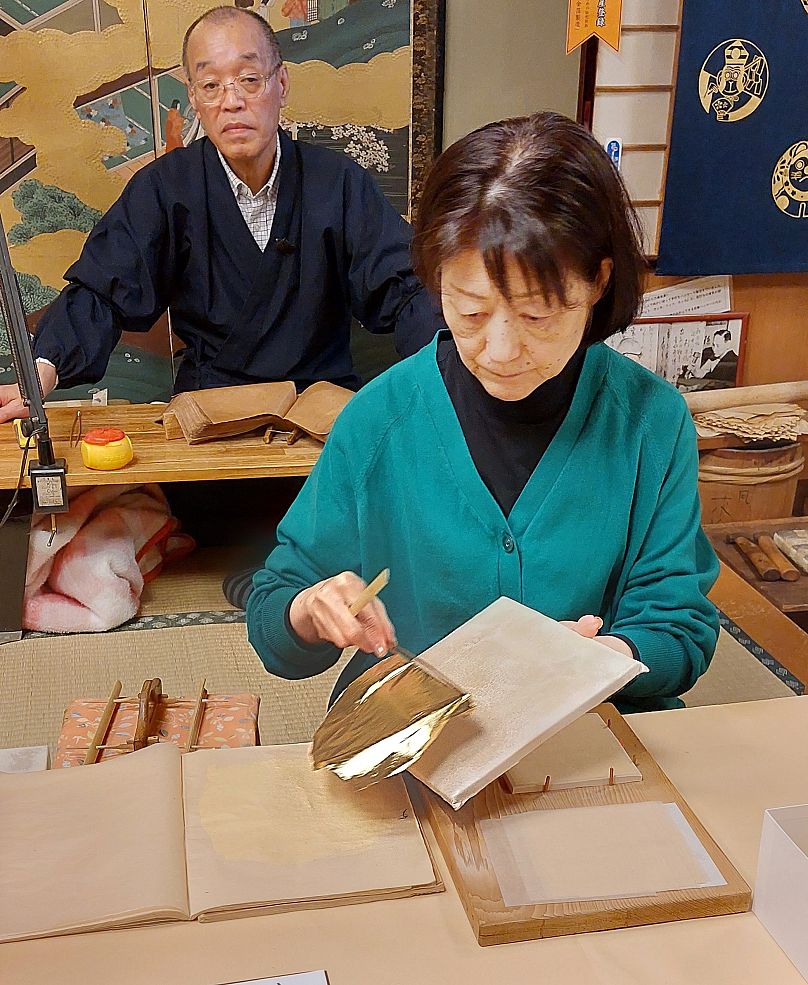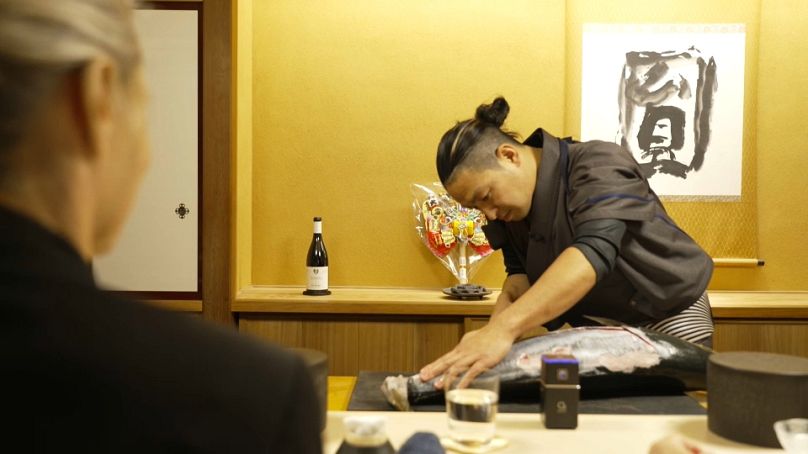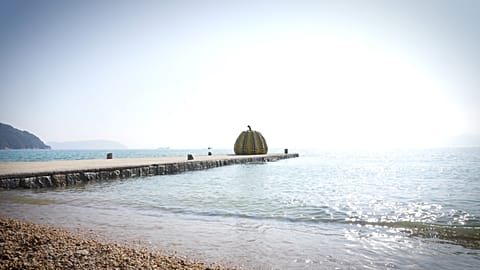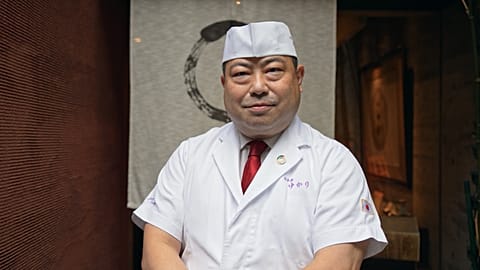Explore with us Kanazawa, like many Japanese cities, is the perfect combination of modernity and tradition, and then follow us to the beautiful Toyama Bay and sample the delicious fresh sushi.
Kanazawa, like many Japanese cities, is the perfect combination of modernity and tradition.
In the heart of Kanazawa lies the Kenrokuen Garden which has been described as one of Japan's "three most beautiful landscape gardens" alongside Mito's Kairakuen and Okayama's Korakuen.
In addition to being home to a beautiful traditional Japanese garden, craftsmanship is one of the major strengths of the city, but its specialty is the gold leaf.
"It has been made in Kanazawa for 400 years." Says Kenichi Teramoto, who works in the manufacturing department at Sakuda gold Leaf Co. Ltd. "And before that, it was made in Kyoto. And even before that, it was probably made in Egypt or around that region. When it was transferred from Kyoto, by chance, the climate in Kanazawa is more suitable to make it there. And it is now made exclusively in Kanazawa. If you have 1kg of metal you can get about 52,000 standard size gold leaves."
Toyama is 65 kilometres from Kanazawa, only a 23 minute journey on the Shinkansen, the bullet train which travels at 260 km per hour. From there you can visit Shinminato harbour on the beautiful Toyama Bay.
"Toyama's ingredients are very fresh and different from those in other regions, and some of them can only be found in Toyama." Explains Takahiro Gejo, owner and chef, of the Gejo restaurant. "The cold water melts from the magnificent 3,000-metre Tateyama mountain range and sinks into the Sea of Japan and there are about 380 kinds of fish in this sea. So maybe this is a unique place in Japan."















